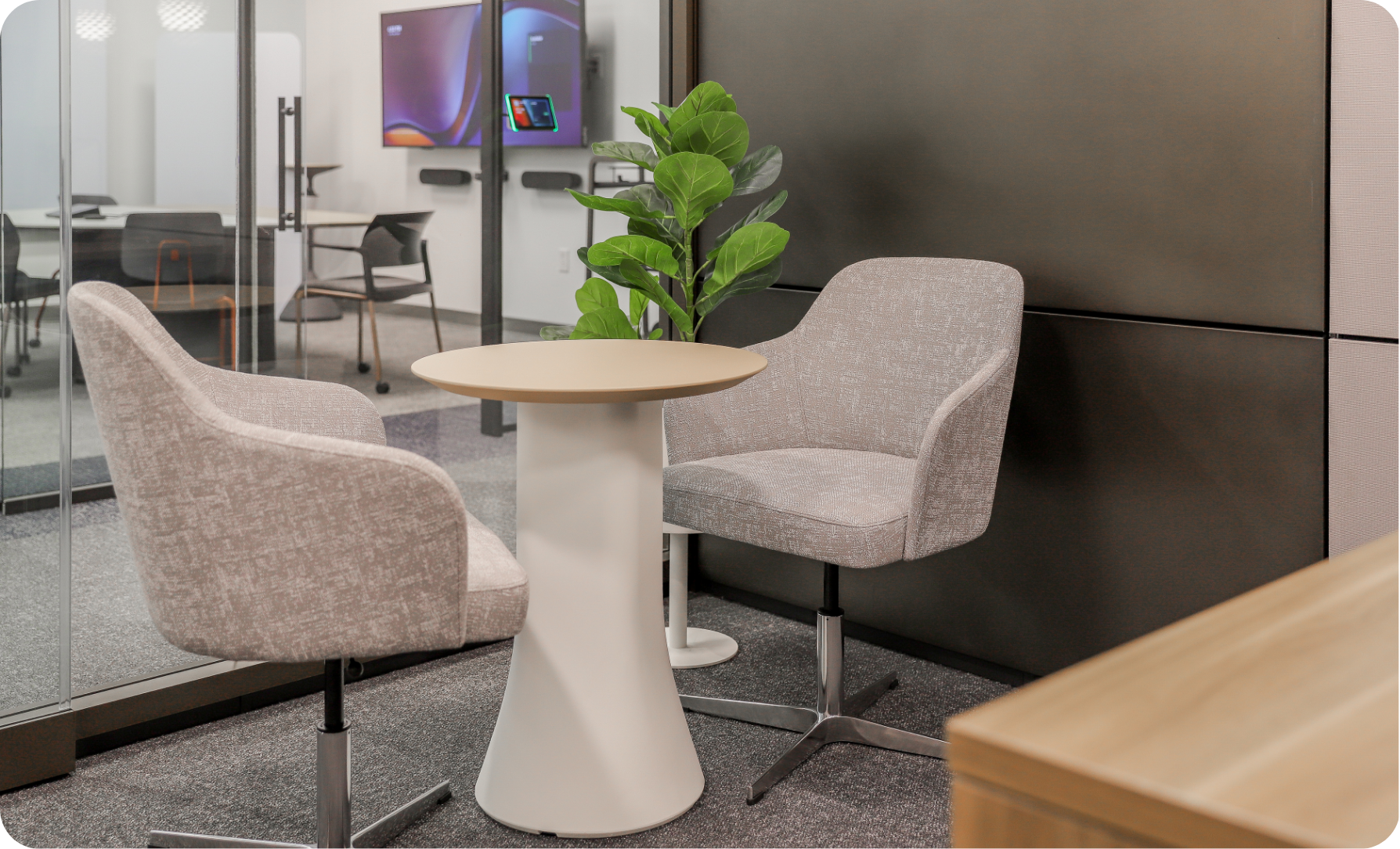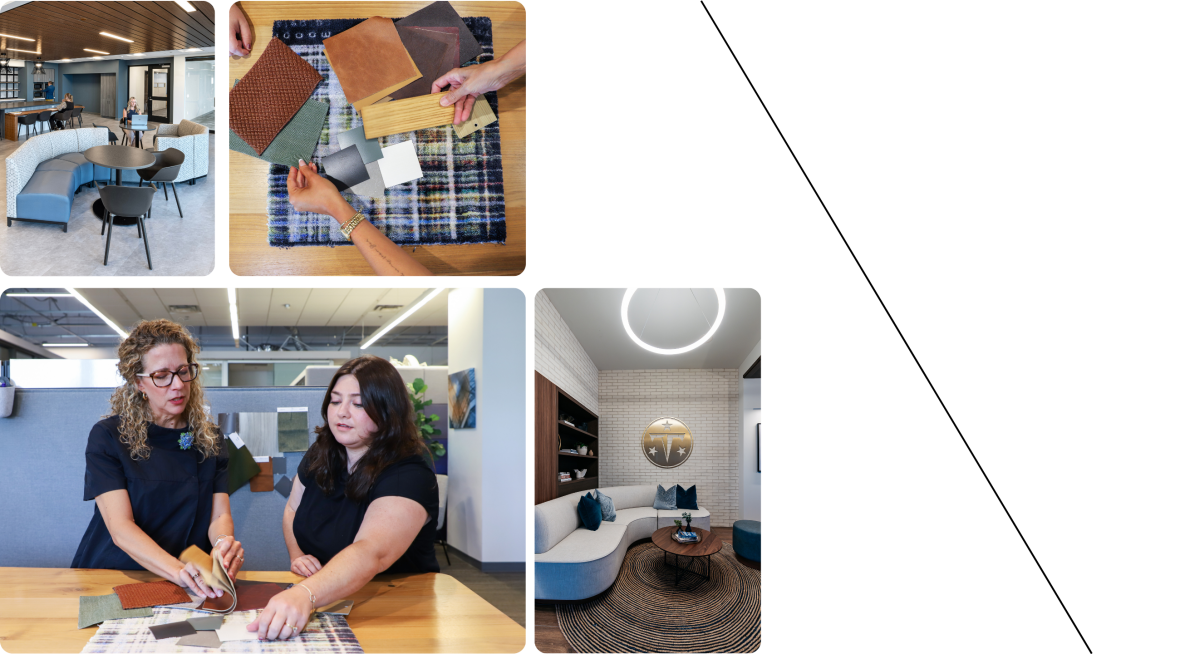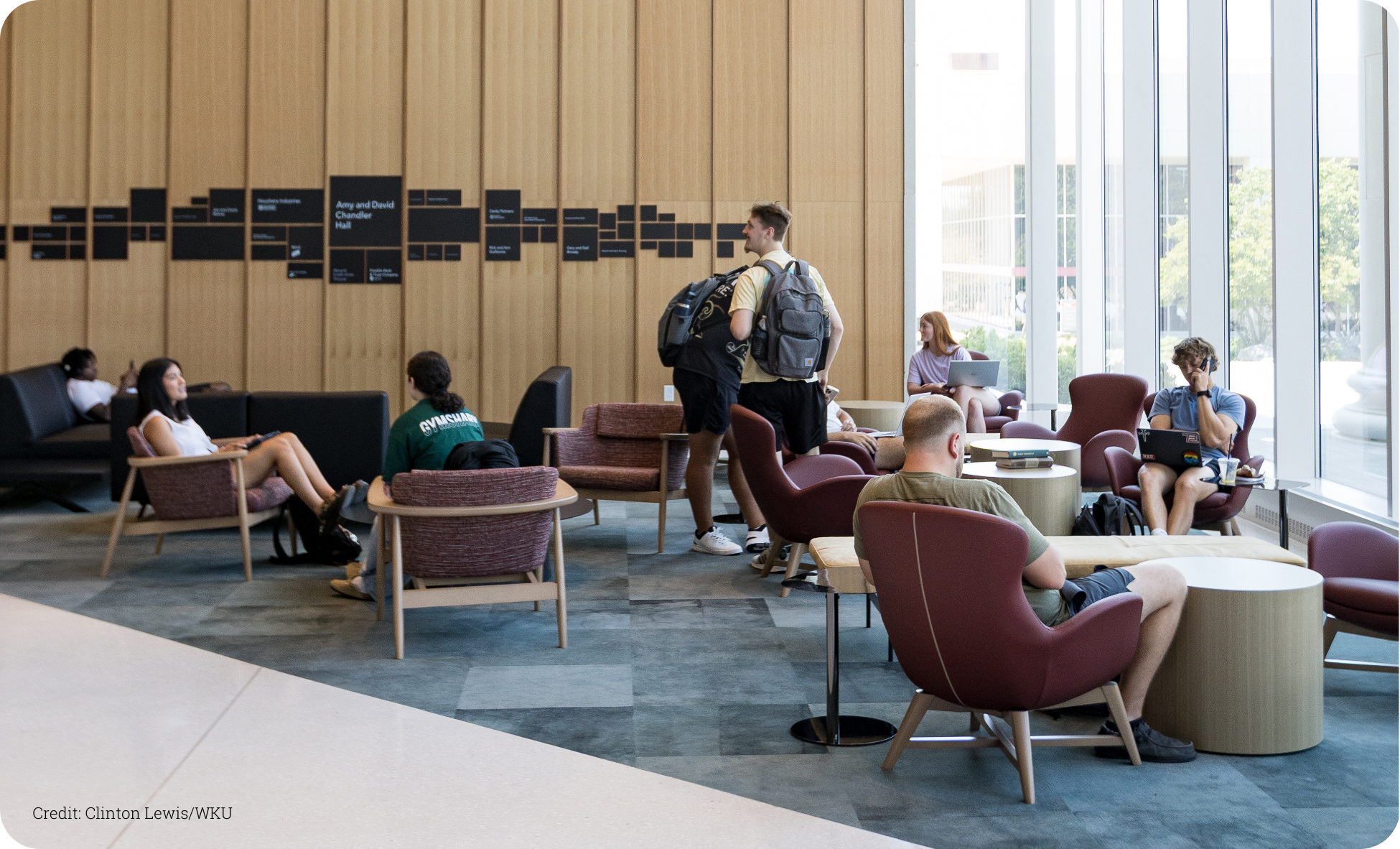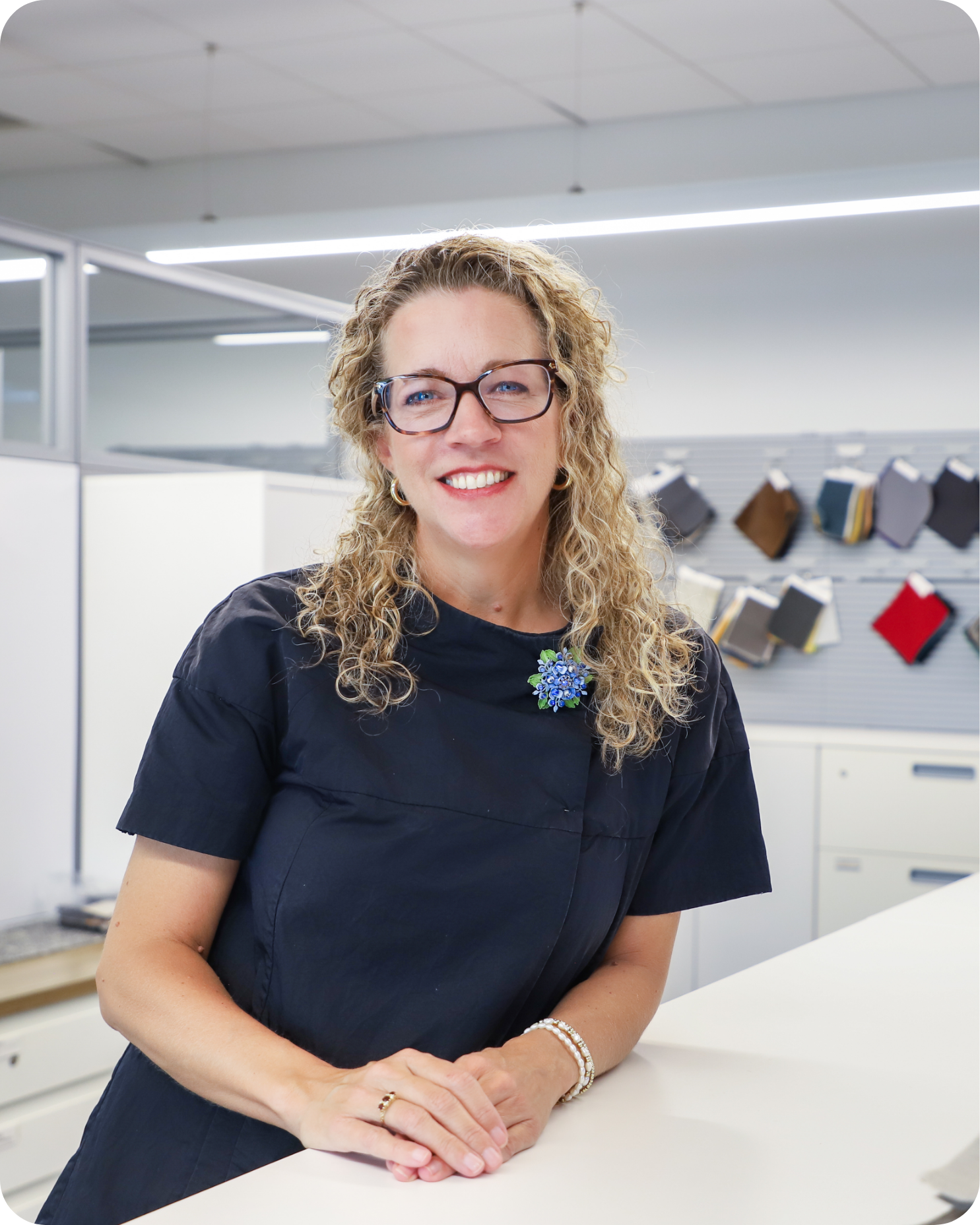When you think about expressing your brand through your workspace, furniture probably isn’t the first thing that comes to mind. But here’s something we’ve learned after years of helping clients reimagine their environments:
The secret to a high-performing, culture-rich office lies in the spaces between: the lounge, the café, the nook, the corner.
Ancillary furniture isn’t just filler, it’s the glue. And when it’s done right, it turns your office into a place people actually want to be.
So, what exactly is ancillary furniture?
It’s everything that fills the space between desks and offices. Lounge chairs in a tucked-away corner. A soft seating area at reception. Café tables in the break room. These are the spaces where people pause, reset, gather, and connect. When done well, they become some of the most valuable square footage in the office.
Paula Smith, Vice President of Design at ORI, shares how these spaces can become some of the most strategic and memorable parts of a workplace when approached with intention.
We’ve included a few prompts along the way to help you reflect on your own space!
1. Let Your Space Speak Volumes
Furniture doesn’t speak but it sends a message. The right pieces can show your culture without saying a word. A reception area with branded details shows a high level of care. Café-style seating means collaboration. A cozy lounge says permission to breathe.
“It’s not just furniture. It’s about supporting culture,” says Paula. “A lot of clients don’t know where to start. There’s just so much out there. We start by asking smart questions about budget, purpose, and culture. That’s how we uncover what’s really needed.”
Ask yourself:
-
What should people feel when they walk in?
-
Do our shared spaces reflect who we are today, or who we used to be?
2. A Beautiful Space Isn’t Enough
A great-looking space that no one uses is just a missed opportunity. Sometimes it’s a matter of comfort or layout. Sometimes it’s something simple, like access to power.
“We’ve seen beautiful lounges sit empty because they’re not practical,” Paula explains. “People avoid them when there’s no privacy or when power isn’t within reach. A few small adjustments can completely change how a space is used.”
Ask yourself:
-
Are people using this space or walking right past it?
-
Have we designed for how people use a space, not just how it looks?
3. Spaces Should Flex as You Do
Work changes and your space should keep up. Whether it’s an outdoor space or a lounge area, being able to move items around to suit the needs of the space is key.
“We work with clients to align their brand and business goals with real-life behaviors,” says Paula. “A strong ancillary strategy can turn a building into a destination where people actually want to be.”
Ask yourself:
-
What’s actually working and what’s not?
-
Have we updated our space to reflect how we actually use it today?

4. Learning From Our Own Showrooms
Our showrooms are test kitchens. We try things, observe patterns, and adjust so your spaces can benefit from what we’ve already learned.
One key lesson? “People naturally gravitate toward spaces with a bit of shielding,” Paula says. “Even just a little privacy makes a huge difference in how comfortable and productive someone feels.”
Ask yourself:
-
Are we observing how people use our space before making design decisions?
-
Are we offering enough privacy and comfort for people to focus or reset?
We’ve Got You
Whether you’re just starting to think about ancillary furniture or reworking your entire space, we’re here to help you get it right.
“Anyone can order furniture online,” Paula says. “What we do is help clients cut through the noise and build something that feels cohesive, smart, and tailored to how they actually work.”





